Note: For some motors, the cover and, if necessary, the suction hose must be removed for better access.
Manufacturer Valeo
Disconnect the negative terminal from the battery. Vehicles with air conditioning - Disconnect the refrigerant lines from the expansion valve.
Danger! The coolant temperature of a warm engine may exceed 100°C. The cooling system is under pressure - risk of burns! Relieve pressure and allow coolant to cool before starting repair work.
Mark coolant hoses -1- and -4-.
Note: The heat exchanger is designed so that the refrigerant flows in a certain direction, so it is important not to mix up the hoses when connecting.
Clamp the cooling system hoses with clamps. Push out clips -2- and -3-. Detach coolant hoses -1- and -4- from heater heat exchanger.

Push the short hose -1- onto the top fitting. Place a container -2- under the lower fitting -3-. Using a blow gun, carefully blow out the remaining coolant from the heat exchanger into container -2-. Seal open openings in lines and fittings with clean plugs, eg from engine plug set -VAS 6122-. Remove the left side trim of the center console.
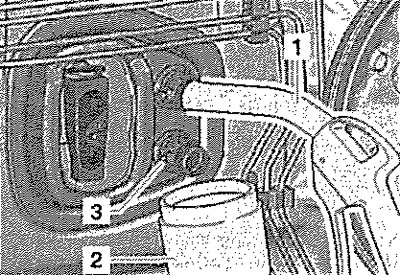
Remove the leg airbag. Remove left footwell air duct. If present, remove heater element for auxiliary air heater -Z35-. In the area under the heat exchanger, cover the floor carpet with a liquid-impervious film, on which a well-absorbing paper is laid. Raise retainer -6- -arrow- and detach clip -5-. Disconnect coolant pipe -4- from heat exchanger. Unscrew screw -3- and remove screw clamp -2-. Disconnect coolant pipe -1- from heat exchanger. Seal open lines and connections with clean plugs from engine plug set -VAS 6122-.
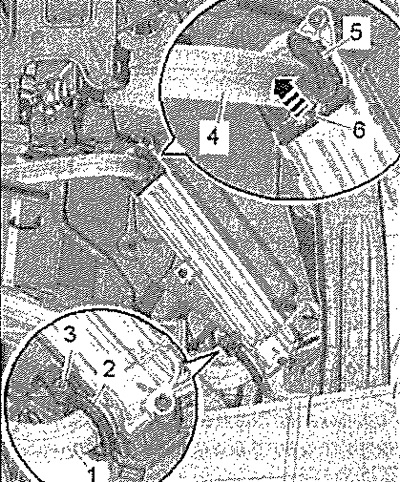
Remove screws -1-, -3- and -5- (2 Nm). Release locks -4- -arrows-, remove cover -2-.

If the cover cannot be removed, cut the tabs on the cover -arrows-. Remove the heat exchanger from its seat.
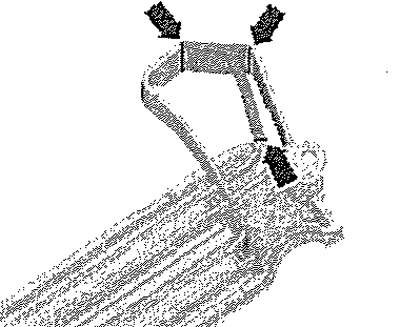
Installation
Installation in reverse order.
Note: Replace sealing rings.
Check seat with heat exchanger and heater element -Z35- removed, remove any dirt or coolant residue. Check the foam pads -2- located on the heat exchanger -1- for damage and replace if necessary.
Note: An incorrectly bonded foam pad may curl up when inserted. If the gasket is damaged or incorrectly installed, cold air may flow past the heat exchanger.
Check fittings -2- and -3- for dirt and damage. Clean and, if necessary, polish the surface for contact with the O-rings.
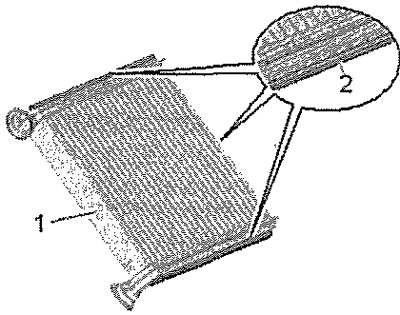
Lubricate new O-rings -4- with coolant (or a small amount of silicone grease) and install on the coolant pipe -1-. Carefully insert the heat exchanger into the heater and air conditioner module as far as it will go.

Insert coolant pipes -1- and -4- into heat exchanger as far as they will go.
Carefully! Heat exchanger leakage. Deformed O-rings, misaligned or not fully inserted coolant pipes can cause leaks.
Insert new clips -5- and fit correctly. Install new screw clamp -2- and tighten screw -3- (6 Nm).
Note: The refrigerant lines must not come into contact with the air distributor housing or other parts.
Fill up the coolant. Finally, check the operation of the heater and air conditioner module.
Manufacturer Denso
Disconnect the negative terminal from the battery. Vehicles with air conditioning - Disconnect the refrigerant lines from the expansion valve.
Danger! The coolant temperature of a warm engine may exceed 100-C. The cooling system is under pressure - risk of burns! Relieve pressure and allow coolant to cool before starting repair work.
Mark coolant hoses -1- and -4-.
Note: The heat exchanger is designed so that the refrigerant flows in a certain direction, so it is important not to mix up the hoses when connecting.
Clamp the cooling system hoses with clamps. Push out clips -2- and -3-. Detach coolant hoses -1- and -4- from heater heat exchanger. Push the short hose -1- onto the top connector. Place a container -2- under the lower fitting -3-. Using a blow gun, carefully blow out the remaining coolant from the heat exchanger into container -2-. Seal open openings in lines and fittings with clean plugs, eg from engine plug set -VAS 6122-. Remove the left side trim of the center console. Remove the leg airbag. Remove left footwell air duct. If present, remove heater element for auxiliary air heater -Z35-. In the area under the heat exchanger, cover the floor carpet with a liquid-impervious film, on which a well-absorbing paper is laid. Unscrew screws -2- and remove screw clamps -3-. Disconnect coolant pipes -1- and -11- from pipes -4- and -7-.
Note: If the coolant pipes cannot be removed due to glued O-rings, disconnect the coolant pipes at the marked points -arrows-, e.g. and -11-. If the coolant pipes separate, the heat exchanger -6- must be replaced when reinstalling.
Remove screw -10- and remove bracket -9-. Pull heat exchanger -6- out of its seat.
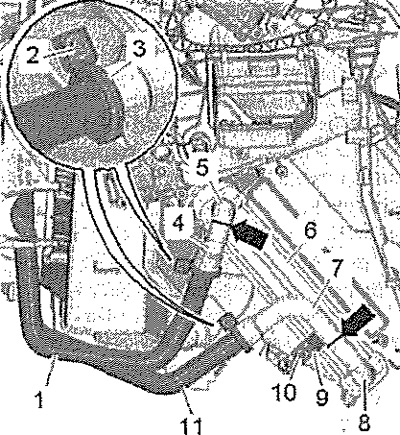
Installation
Installation in reverse order.
Note: Replace sealing rings.
Check seat with heat exchanger and heater element -Z35- removed, remove any dirt or coolant residue. Check the foam pads -2- located on the heat exchanger -1- for damage and replace if necessary (in fig. heat exchanger manufactured by Valeo).
Note: An incorrectly bonded foam pad may curl up when inserted. If the gasket is damaged or incorrectly installed, cold air may flow past the heat exchanger.

Check pipe fittings -1- and heat exchanger -3- for damage or dirt. Clean and, if necessary, polish the contact surfaces of the O-rings. Lubricate new O-rings -1- with coolant (or a small amount of silicone grease) and install on the coolant pipe. Carefully insert the heat exchanger into the heater and air conditioner module as far as it will go.
Note: When installing the heat exchanger, do not damage the coolant fittings and pipes.

Insert the coolant pipes into the heat exchanger fittings as far as they will go.
Carefully! Heat exchanger leakage. Deformed O-rings installed at an angle or not fully inserted into the coolant fittings can cause leaks.
Install bracket -3- for heat exchanger on air distributor housing and tighten screw -4- (2 Nm). Install new screw clamps -2- and tighten screws -1- (6 Nm).
Note: The refrigerant lines and screw clamps must not come into contact with the air distributor housing or other parts.

Fill up the coolant. Finally, check the operation of the heater and air conditioner module.
